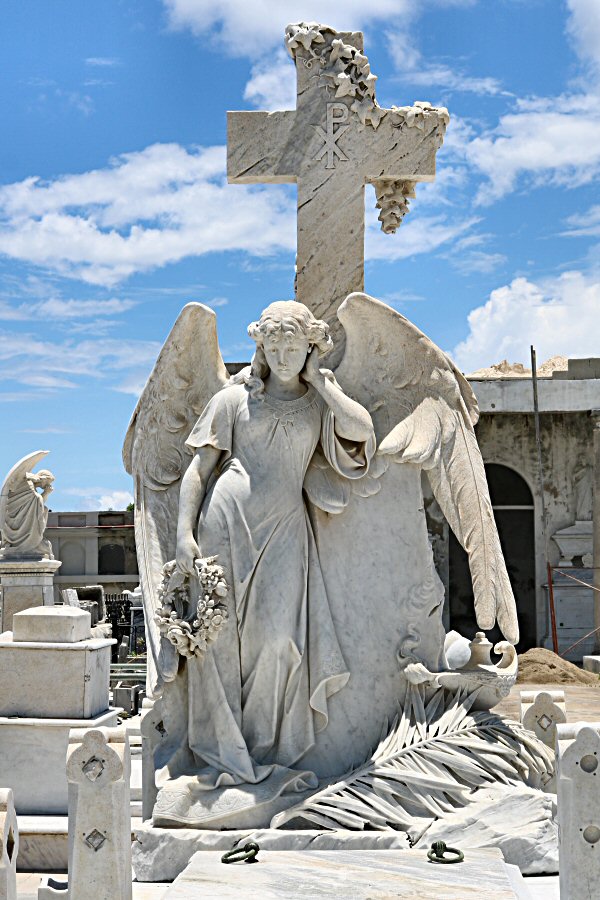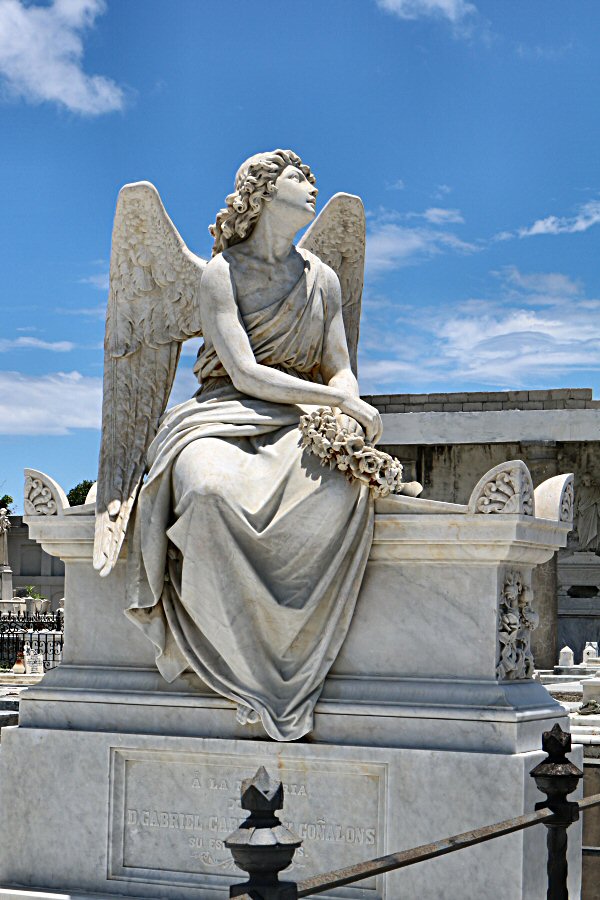
statues show the richness of the family

one of countless beautiful statues in the metery

famous La Bella Durmiente (Sleeping Beauty)

the cemetery also reveals the level reached by marble crafting
Architectural Features
The fact that the
inner courtyard is surrounded by three rows of vertical
niches adds an important value to the cemetery. The dead
were interred in the walls above the ground. This form of
burial in niche walls was a common burial mode during the
Cuban colonial time in the 19th century, comparable to the
Italian cemeteries of that time, but it is likely that such
a burial mode was mostly preferred due to the high
groundwater level as the cemetery was very close to the sea.
Cementerio General de Reina is unique in the country as this
form of burial is the only one, preserved in Cuba from the
colonial time. In the niches, there are buried people whose
date of death dates back to the 1830s.
The cemetery also
reveals the level reached by marble, cast iron and slate
craftsmanship. Indeed, the bas-reliefs seen at the tombs and
the ornamental cast iron works that surround the vaults are
no doubt the work of subtle elegance. Actually, the burial
should be carried out directly in the ground, like in
American cemeteries, but Cubans had certain beliefs and
taboos with this fact, so many did not comply with the norm
and built vaults habitually.
There are a
noteworthy chapel (cuurently under restoration), elaborately
wrought vaults, and tombstones, but the most striking
feature of the cemetery is the large number of marble
statues. These sculptures, which are indicators of the
richness of the buried persons, add a very artistic value to
the cemetery. Let's not forget that in the 19th and 20th
centuries, Cienfuegos was an important sugar production
area. Most of the ornate graves, we see in this cemetery,
belong to the wealthy families who owned large sugar
plantations. At the same time, it is possible to reach some
clues about the history of the city from these tombs. For
example, some tombs with symbols of the Spanish army belong
to the Spanish soldiers that were fallen during the Cuban
War of Independence (1868-1898). The dead of families with
low economic status were buried under flat stone slabs in a
separate section.
The most remarkable one among these
exquisite sculptures is the white marble statue, called as
La Bella Durmiente (Sleeping Beauty). It was erected in
homage to Maria Josefa Álvarez Miró who died of a broken
heart at the age of 24 on July 16, 1907, when her fiancee
did not return from a trip abroad. Some say that the young
woman died of cholera during the epidemics; others mention
that she died giving birth. The statue is the work of an
Italian sculptor.
The young woman is represented in her
nightgown, leaning on a cross. It looks like a living maiden
with wings. While holding a bunch of poppies as a symbol of
life with her left hand in her lap, she gently crushes a
snake with her right hand, referring to death. Her face is
looking toward the visitors. Soon it became the symbol of
the cemetery due to the beauty of the marble figure, the
perfection and smoothness of its lines.
